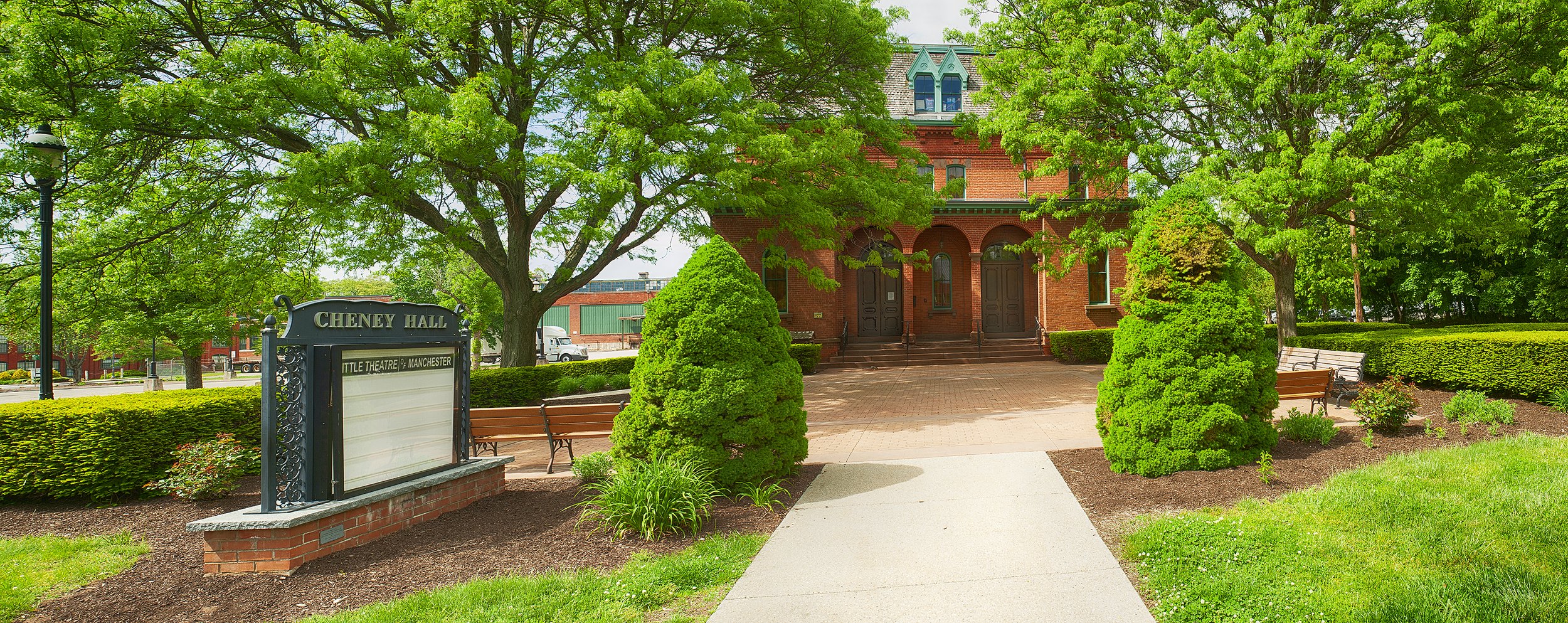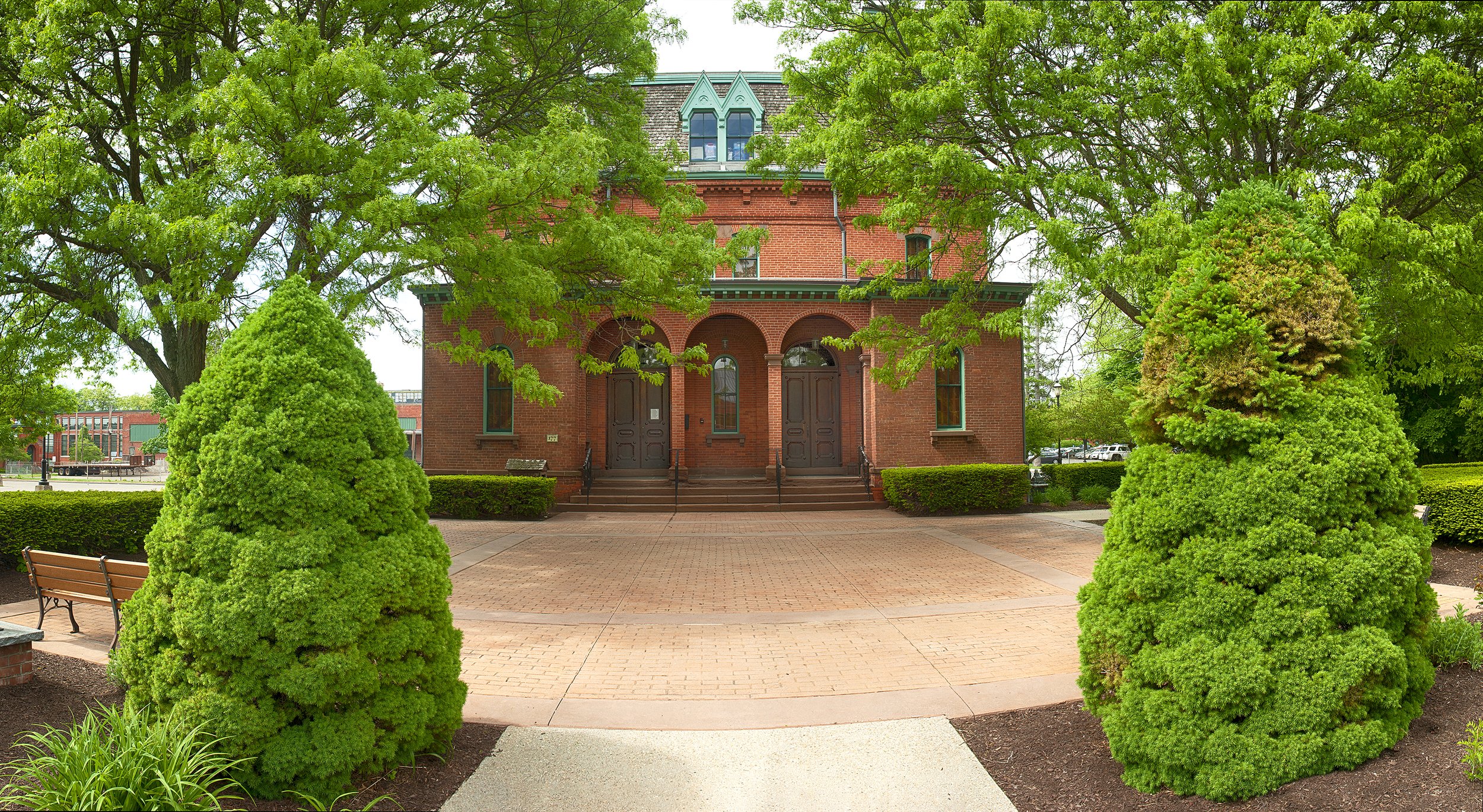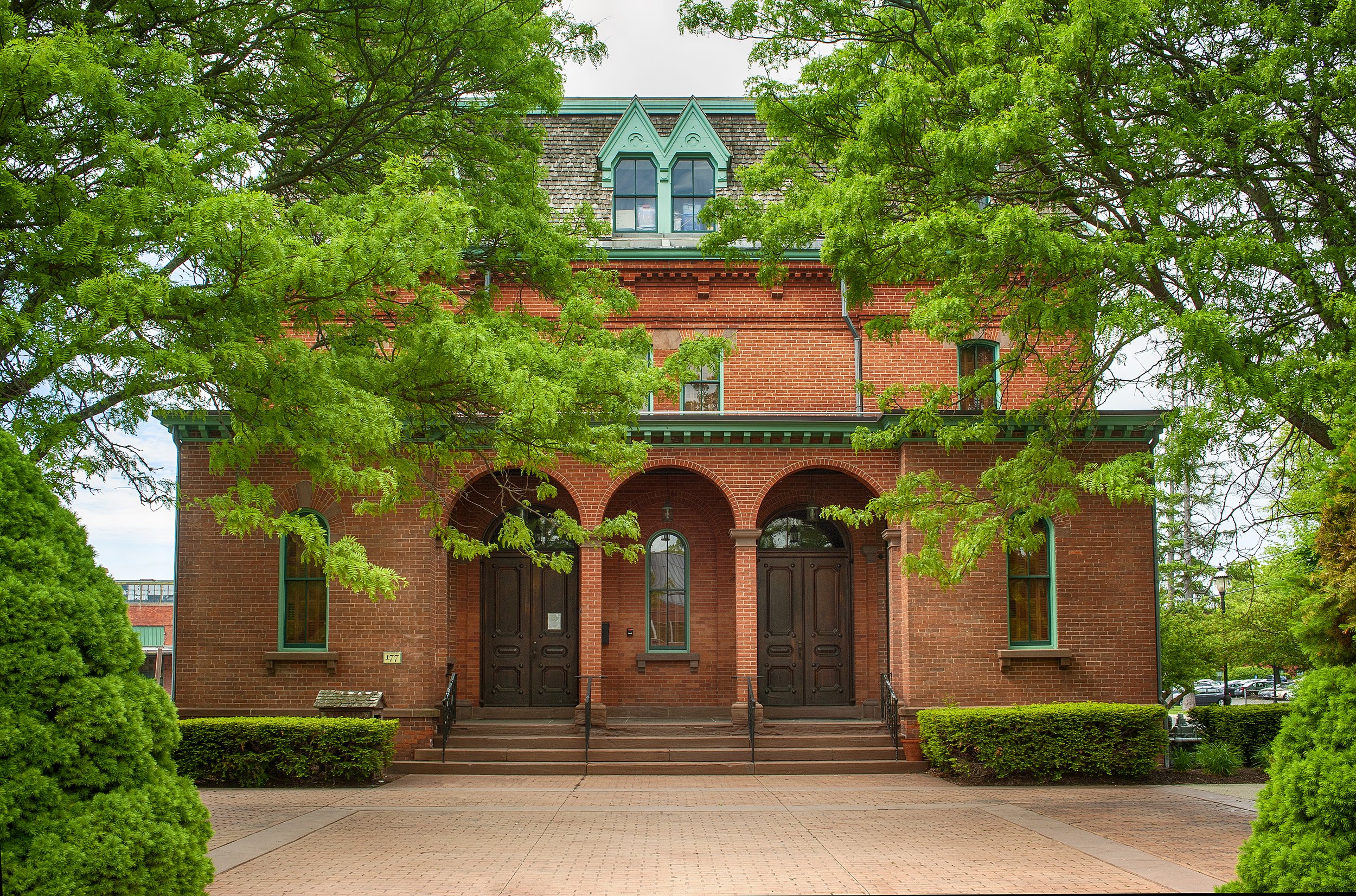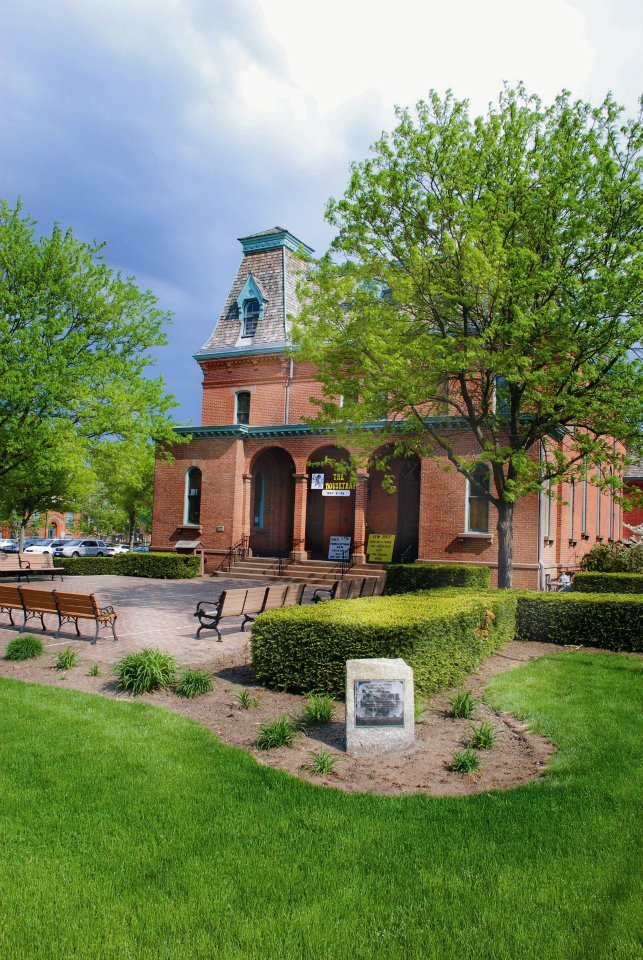History of Cheney Hall
Cheney Hall, an elegant Victorian structure, was designed by Hammat Billings of Boston in 1866 for Cheney Brothers Company, renowned silk industrialists.
The Hall was built as a theatre and cultural community facility for Manchester. The architecture is that of the French Second Empire Style with medieval and renaissance characteristics. Architectural features include a Mansard roof, segmented and full circle windows, brick and brownstone arches, intricate corbelledcornices, carved oak and chestnut trim in arabesque patterns and an 1866 E. & G. G. Hook tracker organ built into the rear stage wall.
Dedicated in 1867 by Horace Greeley, Cheney Hall opened its doors to local theatrical/musical events and gala parties and balls. Theatrical touring companies played at the Hall and there were lectures by prominent speakers of the day, including Presidents Grover Cleveland and William H. Taft; Susan B. Anthony, Henry Ward Beecher and Phillips Brooks (the composer of O Little Town of Bethelem). For over six decades the Hall served as a library, lecture and concert hall, theatre, armory (during the Spanish American War), banquet hall, hospital, school, church, and tea room.
With social and political changes, the silk industry and the use of Cheney Hall declined. The Hall became a fabric salesroom in 1925 and finally closed its doors in 1976.
The Cheney Brothers National Historic Landmark District, of which Cheney Hall is a contributing property, was established in 1978 through a designation by the U.S. Department of the Interior and is listed in the National Register of Historic Places. Three years later, Cheney Hall was donated to the Town of Manchester and subsequently leased by the Cheney Hall Foundation, a town agency, to The Little Theatre of Manchester, Inc. (LTM). In 1991 an extensive, award-winning restoration was completed. Cheney Hall is now LTM’s theatrical residence and the Little Theatre manages the Hall as a facility for other cultural, business, civic and private functions.
For information on tours and activities, call the LTM box office, Monday through Friday from 10 a.m. to 5 p.m. at 860-647-9824.
Articles on Cheney Hall
Manchester Historical Society: http://www.manchesterhistory.org/MHS3_Cheney_Hall.html
CTMQ: https://www.ctmq.org/341-cheney-hall/
Connecticut Office of Tourism’s CT Visit: https://www.ctvisit.com/listings/little-theatre-manchester-cheney-hall
Connecticut Explored: https://www.ctexplored.org/cheney-hall/
ON MANCHESTER STAGES originally published in the April 4, 1967 Manchester Evening Herald: http://www.manchesterhistory.org/reprints/MHS3_Stages1967-04-12.html
“Hospital came about as war memorial and response to 1918 flu pandemic,” Journal Inquirer Oct 11, 2019: https://www.journalinquirer.com/living/your-manchester-hospital-came-about-as-war-memorial-and-response-to-1918-flu-pandemic/article_9547a994-eb95-11e9-8d79-4b33e4a38186.html




